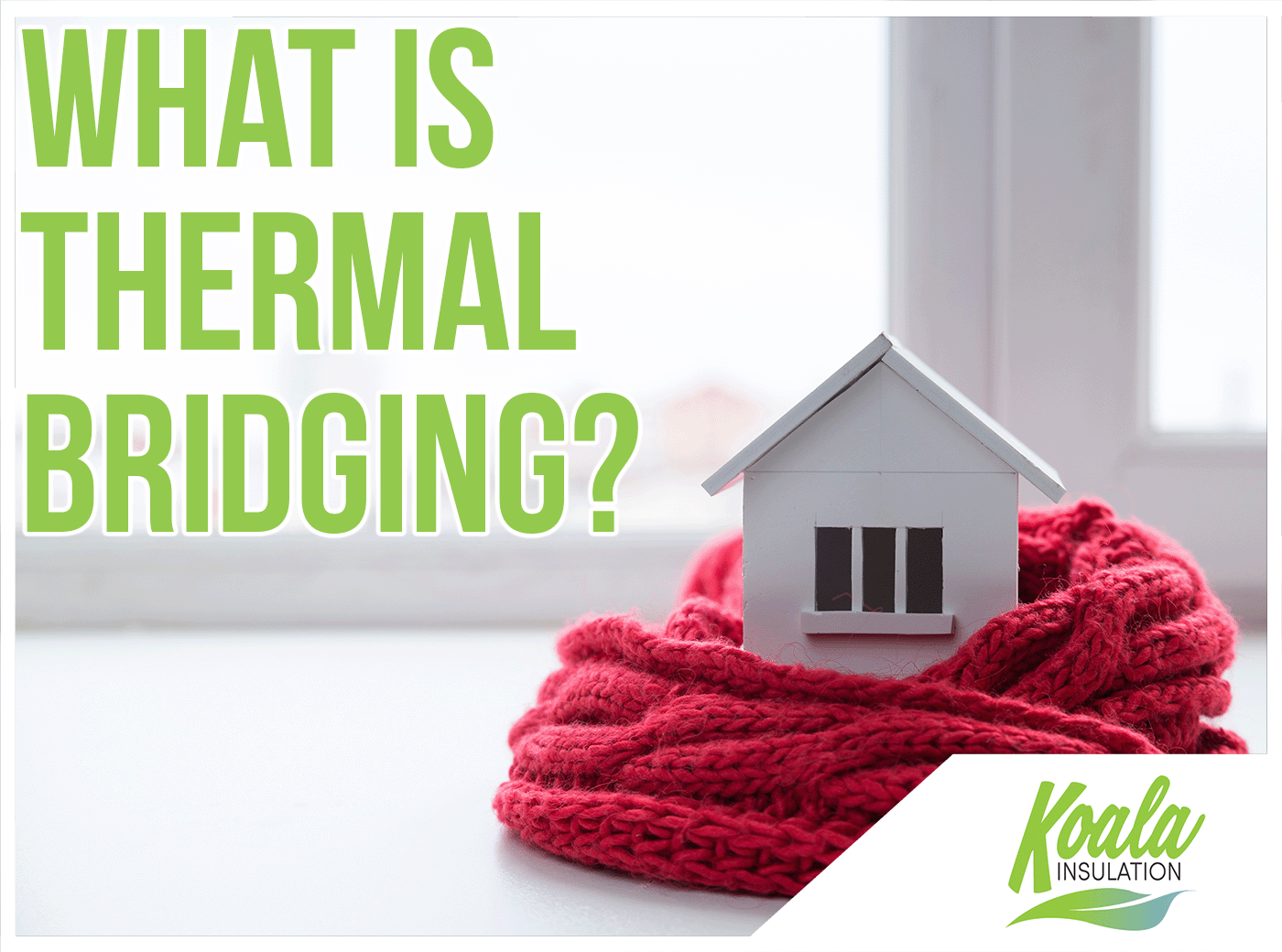
Is Thermal Bridging Causing Problems For Your Home This Season?
Thermal bridging is the movement of heat through a conductive material. Conduction is the direct transmission of heat through a structure when two areas have different temperatures. For your home, this becomes an active problem if there aren’t precautions in place and regularly inspected to reduce its impact.
For most of the year, whether we're trying to warm up or cool off, our homes are going to be at a different temperature than the outside air. Conductive materials around the house create temperature regulation problems during these moments. Those spaces are considered "paths of least resistance" for heat and create a bridge for the energy to pass through. A connection point is created, which acts as a channel for unwanted heat to enter during the summer and desired warmth to escape during the winter.
One common example of a conductive structure in your house would be your wall studs. In addition to these bridges, other areas such as uncovered joists and poorly insulated surfaces contribute to irregular temperatures. These prime candidates for thermal bridging allow for unregulated heat flow throughout your building.
3 Impacts of Thermal Bridging
Climate Control
Insulation needs to be properly installed throughout your home in order to reduce the impact of heat transfer. Places like the attic, basement, within walls, and even under floorboards need to be regularly inspected and updated. To effectively reduce heat transfer, the quality of your coverage needs to also take into account the potential for thermal bridging. Having proper material installed between joists and floorboards is only the first step - these structures and dividers also need to be covered.
Your home’s climate control systems and building envelope require effective support throughout the year. This past summer, did your home struggle to stay cool or did you have higher bills in an effort to keep the AC running? Heat freely enters through conductive structures, increasing the risk of the “stack effect” occurring in places like your attic. As the heat rises, poorly insulated areas in your ceiling and attic space may allow desired warmth to escape. This is why you may have experienced drafts, cold spots, and chills in areas that should have been comfortably heated.
Regular Costs
Creating an uncomfortable environment isn’t the only problem caused by thermal bridging. Irregular temperatures are also often the source of higher utility bills and energy costs. Thermal bridging increases energy waste due to unregulated heat transfer, raising your costs all year round.
Your HVAC system needs to run more often to make up for the incoming heat through these thermal bridges. One of the biggest mistakes homeowners make is taking for granted extreme temperatures; don’t just blame the weather for a sudden spike in your expenses! In many cases, it’s a sign that your insulation is inadequate or needs to be evaluated and replaced.
Safety
These conductive structures also increase the threat of condensation and moisture damage throughout your home. When warm air interacts with a cooler surface, the air condenses into moisture. The resulting water droplets can cause damage and health hazards in the area, leading to rot, mold, or other structural problems like wood warp. The water also damages your insulation and can reduce the effectiveness of the material.
Mold growth and bacteria are serious issues that can cause problematic health hazards, especially for households that have individuals with sensitive respiratory systems and illnesses. Additionally, damp wood attracts pests like termites, dust mites, and carpenter ants. On top of the threat of rot, moisture puts the structural integrity of your home in serious jeopardy and can lead to damage with dangerous consequences.
Reducing Thermal Bridging With Insulation
Insulation in your home creates a barrier between the structure and heat, which is called a thermal break. In most modern-day homes, materials need to be installed to simply cover the joists and studs to help reduce the impact of heat transfer. In older homes, however, there are many areas that easily allow for thermal bridging. This is in part because it wasn’t considered a major concern in the construction industry until more recent advancements and research brought awareness to the issue.
Luckily, there's still a simple and effective solution to reduce the risk of thermal bridging in these spaces: adding a continuous layer of insulation. By scheduling regular inspections and maintenance, you can detect deteriorated and damaged materials before problems like moisture and energy waste start to significantly impact your environment.
In modern buildings and new construction, there’s also the option to build with SIPs (structural insulated panels). There are many new industry practices, such as advanced framing techniques, that can also reduce the use of wall studs without negatively impacting the structural integrity of a building.
New Construction
If you’re developing plans for a new home or business building, it’s important to bring on an industry professional. Your local expert should be experienced in energy-efficient practices while also having the ability to provide advice on reducing energy usage with effective preventative measures.
When it comes to getting ahead of additional costs, one of the most effective practices is fairly simple: stay involved in the early processes to implement practices and methods that are going to support the building envelope for years to come.
Improving Your Space With South Carolina Experts
While you don’t have to be the next neighborhood insulation expert, it’s important to know more about the phenomenon affecting your home. Thermal bridging is only one problem that can impact your environment, influencing your comfort, safety, and savings.
With local experts at Koala Insulation of Greenville, you have the opportunity to learn more about what’s affecting your space on top of assessing the current condition of your home’s insulation and air sealing. Schedule your free evaluation with Koala Insulation of Greenville to reduce the risk of discomfort, higher bills, and safety hazards from problems like thermal bridging.
Ready to book your free insulation evaluation?
We have 3 convienant ways for you to get in touch
We Provide Insulation Services to the Following Greenville Areas
DUNCAN, LANDRUM, LYMAN, GREENVILLE, GREER, TAYLORS, EASLEY, TRAVELERS REST, BELTON, FOUNTAIN INN, MAULDIN, PELZER, PIEDMONT, SIMPSONVILLE, WILLIAMSTON
Counties Served
SPARTANBURG, GREENVILLE, PICKENS, ANDERSON, LAURENS
Zip Code
29334, 29356, 29365, 29615, 29650, 29651, 29687, 29601, 29605, 29607, 29609, 29611, 29613, 29614, 29617, 29640, 29642, 29690, 29627, 29644, 29662, 29669, 29673, 29680, 29681, 29697

